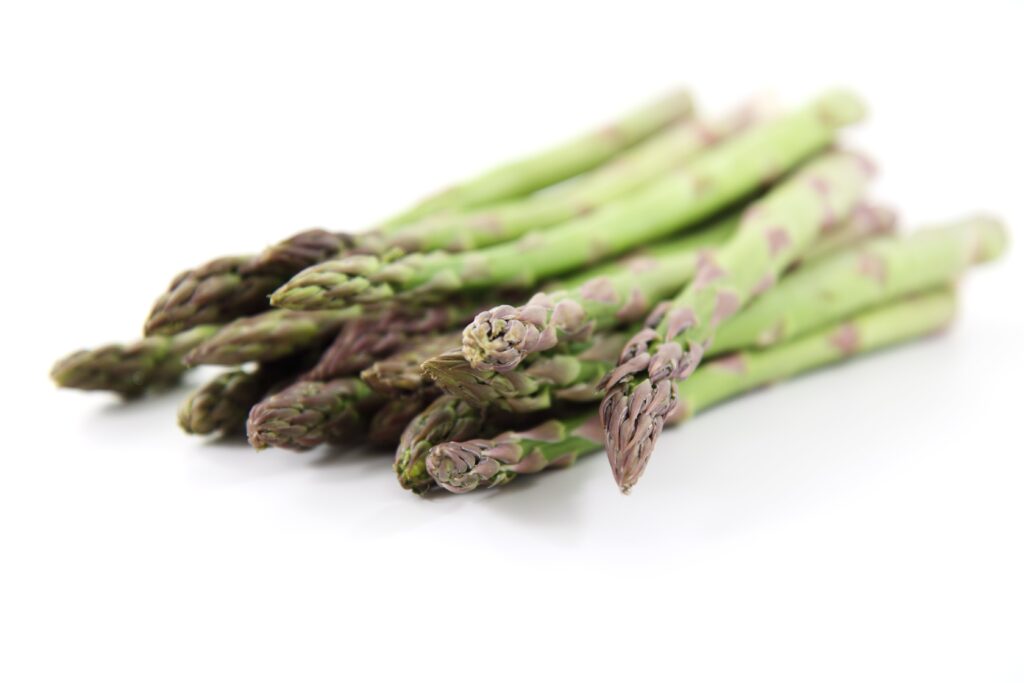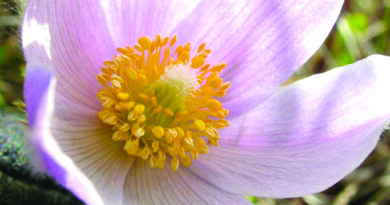Asparagus: Health benefits of a spring sprout
By Dorothy Dobbie
Love your first feed of asparagus in springtime? No wonder. Here’s a short list of the health-giving properties of this little green miracle: vitamin A, vitamin C, vitamin E, vitamin K, vitamin B6, calcium, magnesium, zinc, protein, thiamin, riboflavin, rutin, niacin, folic acid, iron, phosphorus, potassium, copper, manganese and selenium! It is also a very good source of fibre in the diet. A serving of four spears is only 10 calories. Continue reading to find out more health benefits of asparagus, as well as where and how it is grown in Canada.

Asparagus has been a favourite from the very earliest times. There is even an ancient recipe attributed to Apicius, a Roman gourmet who lived sometime around the first century AD.
Asparagus grows wild across Canada, but it is also commercially grown in Ontario, Manitoba, Quebec and British Columbia.
Asparagus can be grown from seed, as transplants or from crown cuttings sold by nurseries. It is hardy to zone 2 and prefers a cool season climate.
If you decide to grow from seed, you will need to start somewhere around mid-February. You can buy seeds from Veseys at www.veseys.com. Soak the seeds for two hours. Seeds germinate at temperatures ranging from 25 to 30 C. Asparagus roots go down six to 10 feet outdoors, so even seeds planted indoors should be started in a deep pot. Sow about 1 1/2 inches below the surface. Seeds take two to eight weeks to sprout, so be patient.

Outdoors, in Alberta, you will probably be planting from one-year-old crown cuttings, which means you should have a harvest about two years later. You can begin about four weeks before the last frost date or as soon as the soil can be worked.
Dig a hole six to 12 inches (the depths vary according to conditions – too shallow and the plants may stay dormant and not produce, too deep and they may not come up). A good sandy soil amended with compost is best.
Transplant seedlings to your well prepared site with plenty of compost and in full sun or partial shade. Asparagus does best in a fertile, light, well-drained site that warms up quickly in spring.
If you started the plants indoors, seedlings should be planted after the last frost, about two to 2.5 feet apart. Asparagus should be planted in holes six to eight inches deep in sandy soils, and five to six inches down in heavier soils. The deeper the hole, the thicker the spear, so seedlings planted at six inches deep will produce thicker spears than those at four inches deep.
Do not fill in the planting holes when you drop in the transplant or crown cutting. Rather, cover the crowns with an inch or two of soil, topping them up, without burying them, as the plant grows. Water frequently and thoroughly. Asparagus roots will reach a depth of 10 feet when mature if conditions are right.
Be patient. For seed-grown crops, you should not harvest until the third year. Asparagus grown from transplants or crown cuttings may be harvested a year earlier. Harvest when spears are six to eight inches long by bending them and snapping them off. Or you can carefully cut them with a knife about one inch below the surface of the ground, being careful to avoid cutting emerging shoots. Damage to emerging shoots will stop further growth. Harvest in the morning when spears are cool and more easily snapped. Harvest every day or two and use as soon as possible as quality rapidly deteriorates.

Eat raw or steam, or heat rapidly and do not overcook. The nutritional value decreases at temperatures over 40 degrees C or 104 degrees F.
Once harvest is completed, allow the ferns to grow up to replenish the roots for next year’s crop. The ferns are attractive, developing small flowers and red berries that birds enjoy. In fall, after the first hard frost, you can cut back the tops or allow them to stand to collect snow as a mulch over winter. Neat gardeners can add a mulch of straw or chips if they wish, although once the plants are established, this will probably not be necessary.
Fertilize in spring and again after harvest. The plants will last 20 to 25 years before needing refreshing.
A well-known variety is ‘Martha Washington’. ‘Guelph Millenium’ is another and ‘Jersey Giant’ is also a favourite.
All-in-all, asparagus has many health benefits, including being a nutrient-rich spring vegetable, and high in fiber, vitamins, and antioxidants. It thrives in well-drained soil and rewards gardeners with fresh, flavorful spears for years. Plant some in your garden this year!





